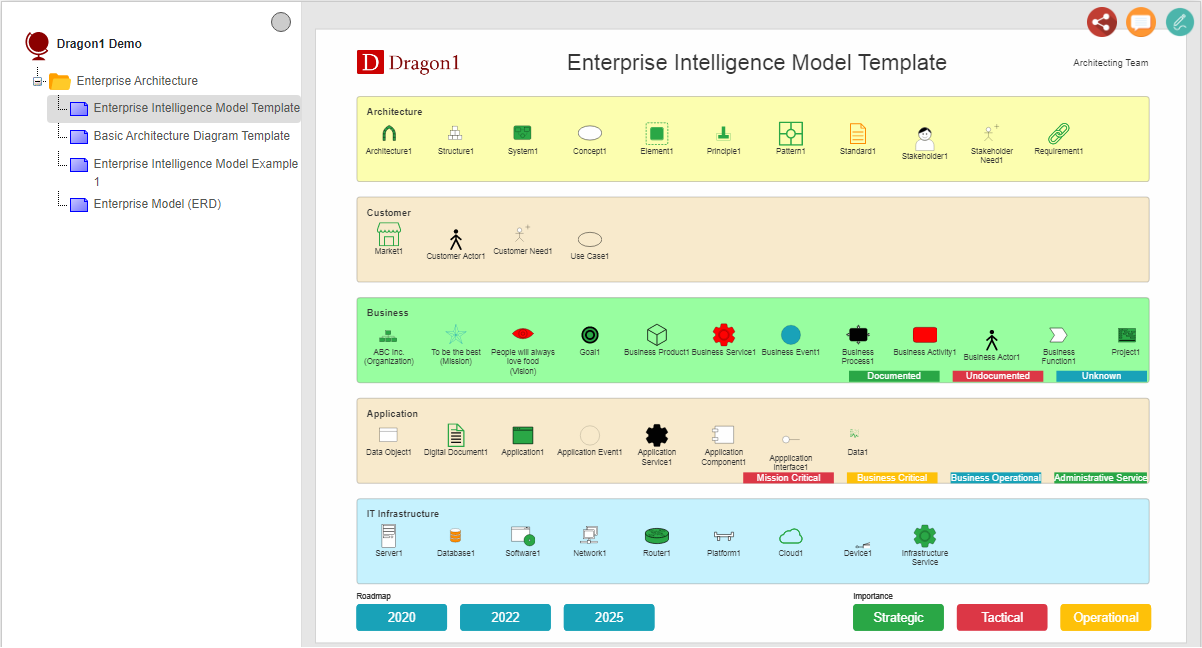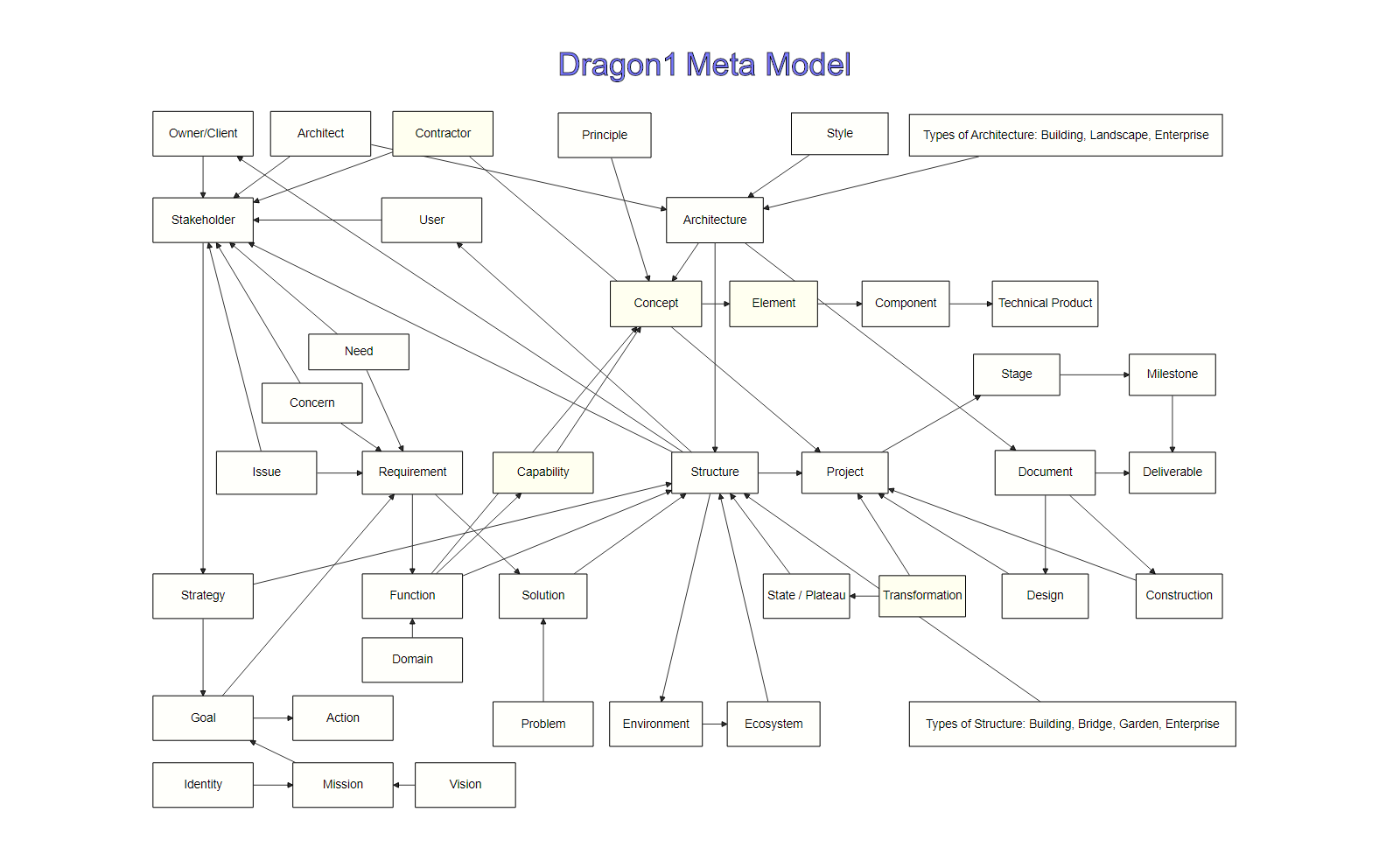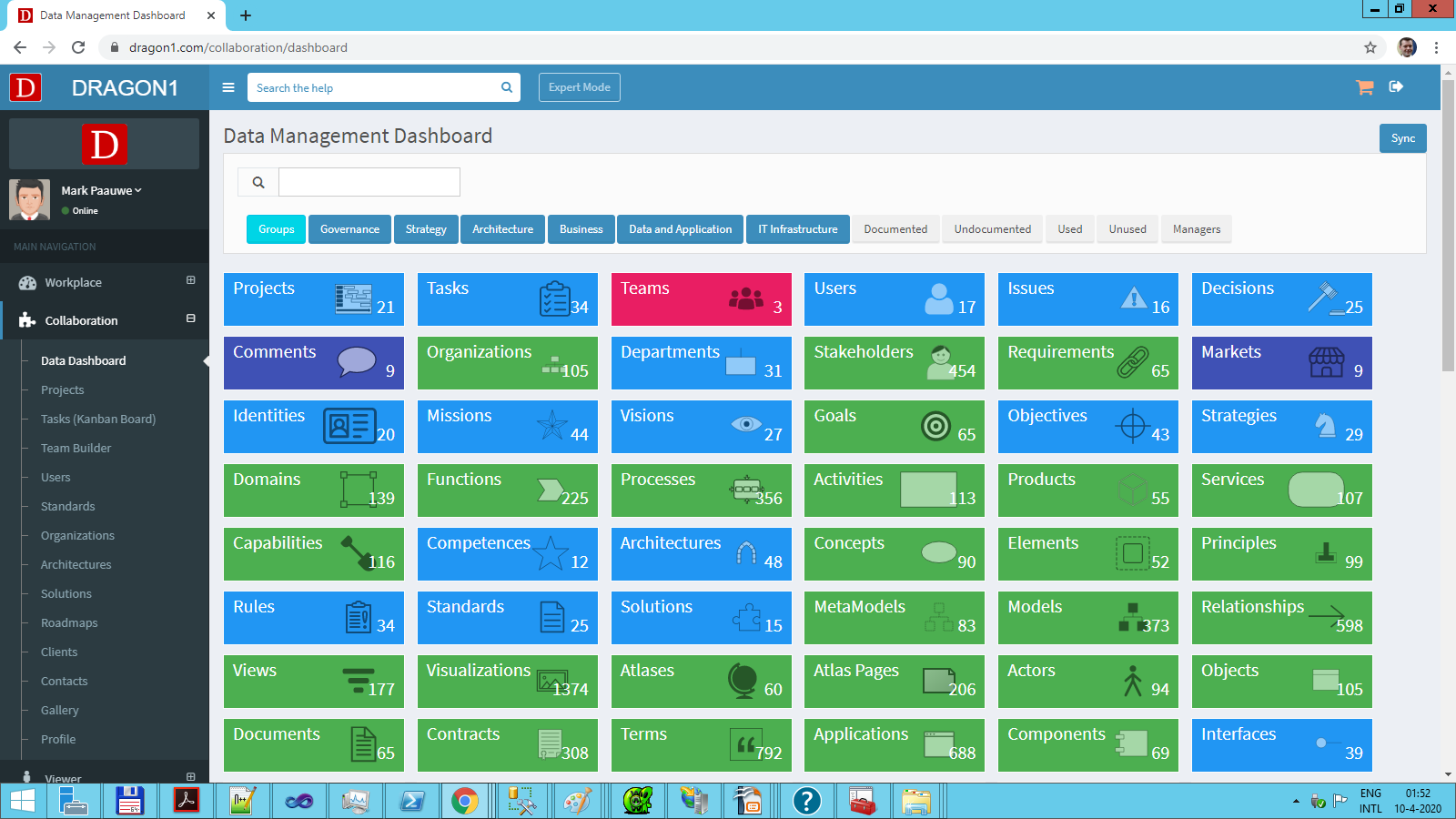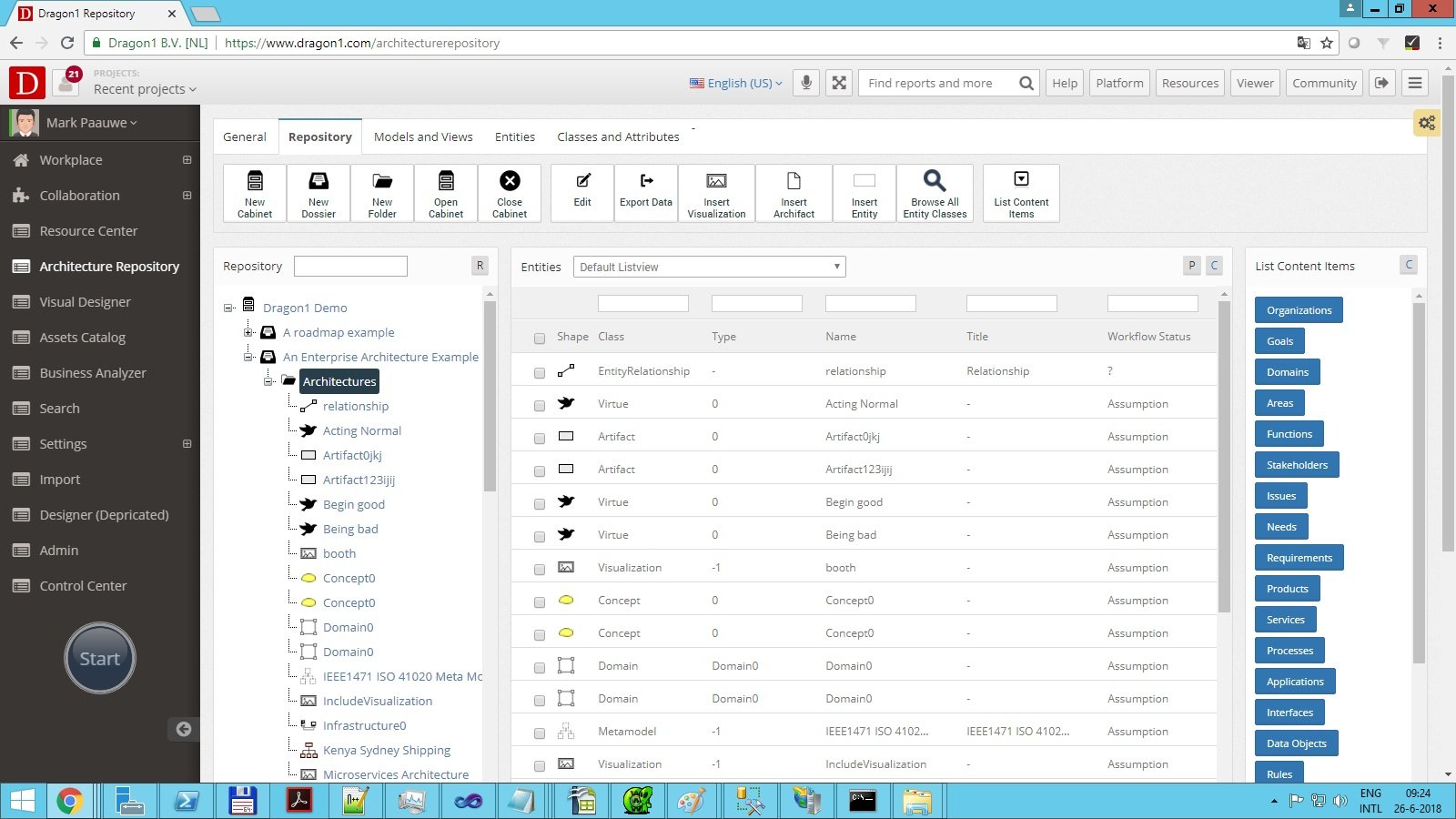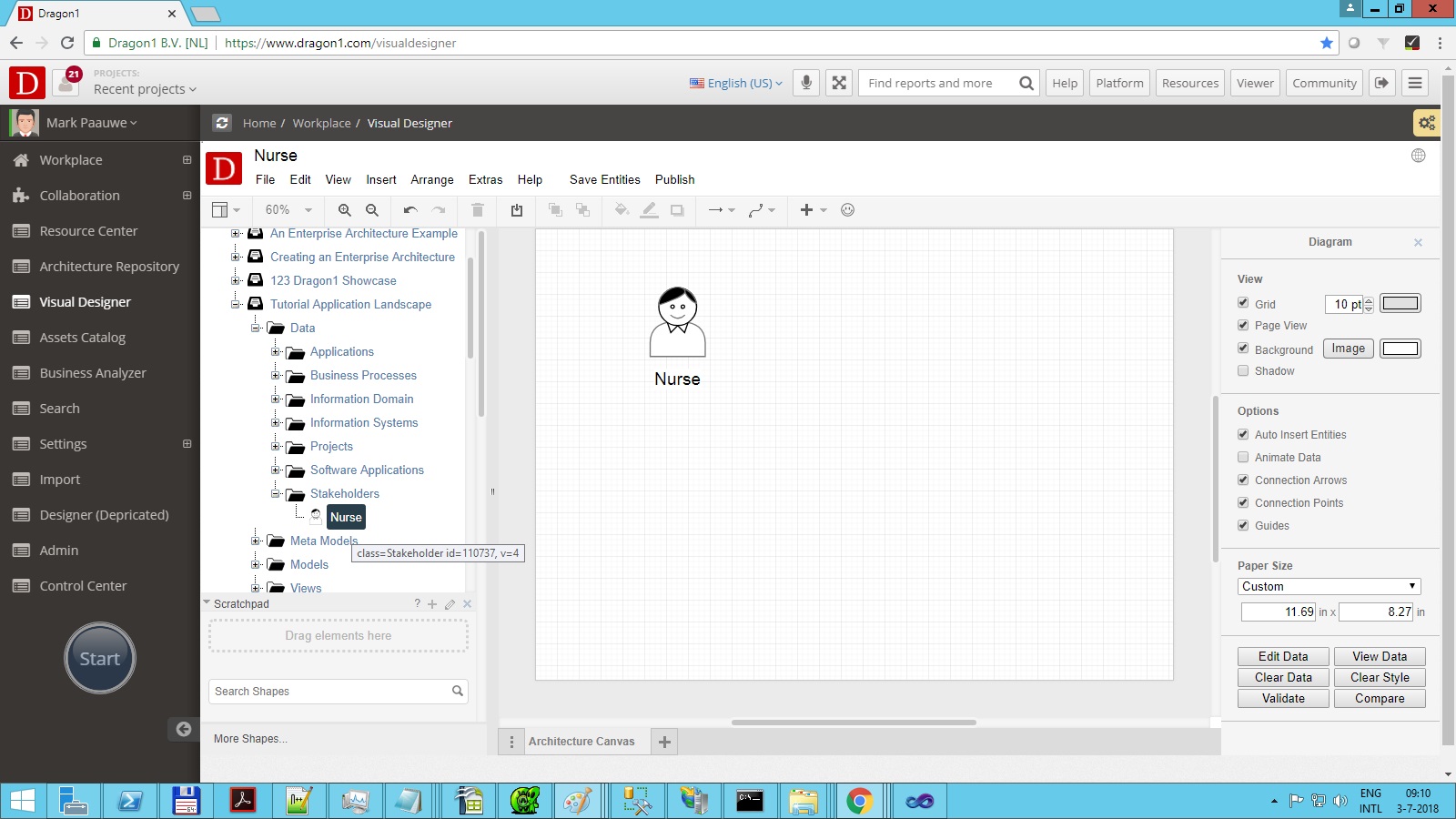What is an Entity Class?
Entity and Entity Class Concept
This page will introduce the concept of Entity and Entity Class and explain their difference. You will learn the building blocks of models and meta models, and what this looks like. The page will show where to find Entity Classes in the software, how to use them, and what the difference is between Archifacts and Entity Classes.
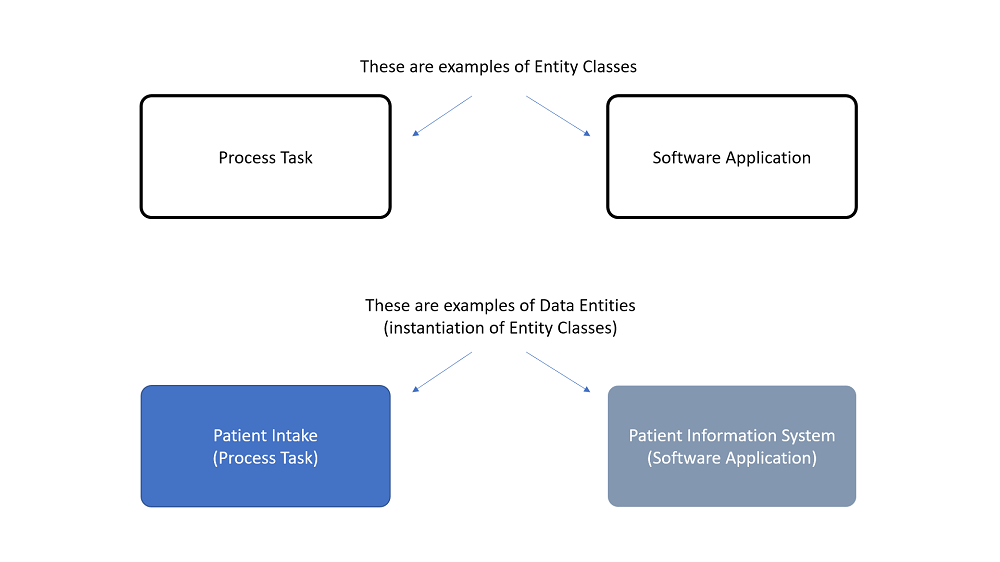
Examples of Entity Classes and Data Entities.
Data Entity vs Entity Class
A Data Entity or Entity is a thing. It is something that can be identified. Such as your computer, your department, and your company.
An Entity Class is a collection of entities sharing the same attributes. Every item in the collection can only be part of the collection if it complies with the definition of the entity class.
Examples of entity classes are: computer, department, and company. All computers in the company share attributes, all departments share attributes, and all companies share attributes.
An entity is an instance of an entity class. Instead of an entity, sometimes an entity instance or a data item is used in speech.
In Dragon1, over 200 Entity Classes are defined, and every entity class has its own shape.
Every company consists of over 200 Entity Classes, so with Dragon1, one can model the uniqueness of the company and its architecture.
A model in Dragon1 is defined as a set of related entities.
Entities are instances of classes. With entities, enterprise models, business models, application models, and infrastructure models are created. With Entities, real-world modeling can be done.
A Meta Model with Entity Classes
A meta-model is a model that shows the allowed relationships between entity classes.
Dragon1 has a defined meta-model. However, you can also change the Dragon1 Meta Model, use a meta-model of a different method or language (like UML or BPMN), or model without a meta-model.
The most important Entity Classes to use in Architecture
Dragon1 has defined a list of core Entity Classes:
- Architecture
- Concept
- Element
- Component
- Product
- Service
- Application
- Data Object
- Server
- Network
- Client
- Cloud
- Principle
- Standard
- Norm
- Rule
- View
- Model
- Relationship
- Plateau
- Framework
- Organization
- Actor
- System
- Structure
- Stakeholder
- Goal
- Business
- Market
- IT Infrastructure
- Information
- Data
Every Entity Class has its own definition, default attributes, and shape.
Entity Classes in the Data Dashboard
The most important Entity Classes to administer and create models, views, visualizations, and atlases with are identified in the data dashboard.
The Data Dashboard can be edited and extended with other Dragon1 Entity Classes and custom (maybe industry-specific) Entity Classes as well.
Entity Classes in the Architecture Repository
In Dragon1, Entity Classes can be maintained from within the Architecture Repository.
Entity Classes in the Visual Designer
In the Visual Designer, the Entity Classes that were defined before can be used to draw the diagram.
Special Entity Class: Archifact Entities
Within Dragon1, there is also a special Architecture Related Entity Class called 'Archifact' (Architecture Artifacts). Archifacts are entity classes, but often they are not part of the system or solution design.
Instead, Archifacts need, refer to, use, or require the system or solution design.
Entity Class Overview
For a complete overview of all types of Entity Classes supported out-of-the-box in Dragon1:


